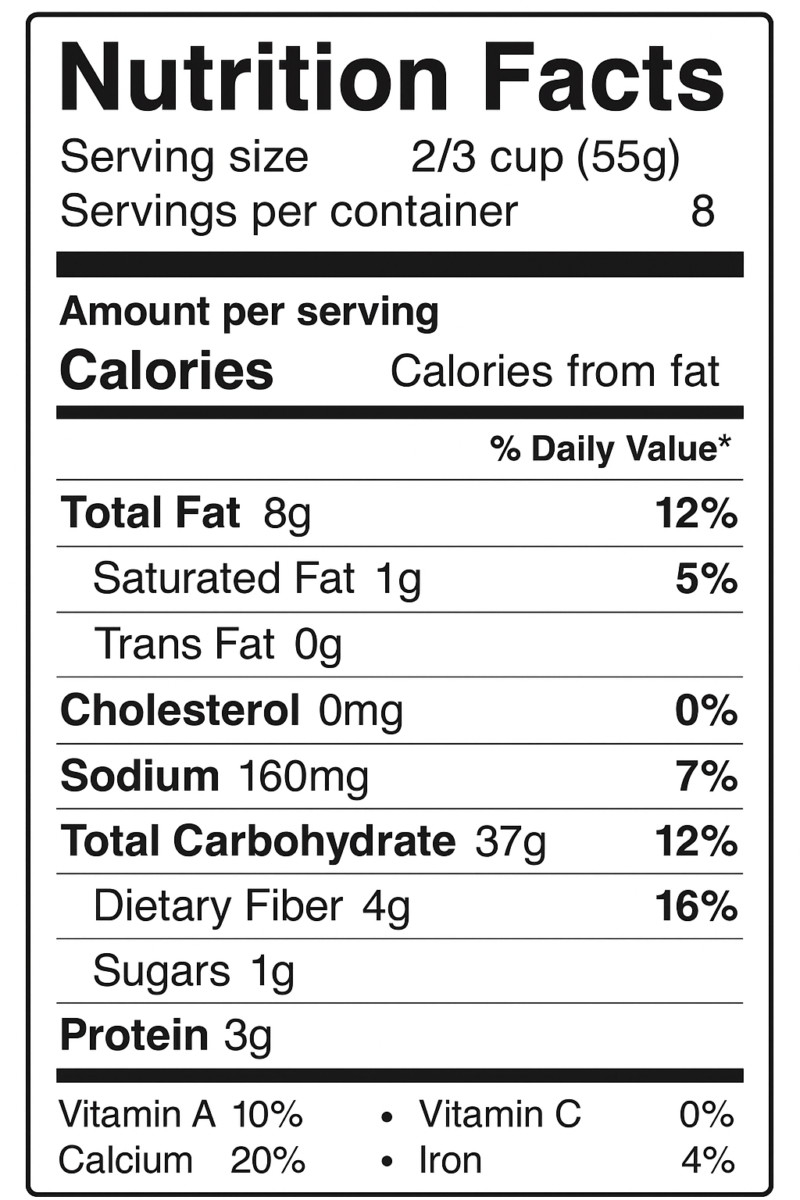Nutrition labels are designed to help you make informed choices about the food you eat. But with so many numbers and terms, they can sometimes feel overwhelming. Learning how to read them effectively can help you maintain a healthier diet and reach your wellness goals.
Why Nutrition Labels Matter
Nutrition labels provide key information about what’s in your food, from calories to nutrients. By understanding them, you can:Compare products before buying
Manage portion sizes
Track important nutrients like fiber, protein, or added sugar
Support specific health goals, such as weight management or heart health
Step 1: Start with the Serving Size
The serving size tells you the standard amount of food the nutrition facts apply to. Always check this first—it may be smaller than the portion you actually eat. If you eat more than the serving size listed, you need to multiply all the other numbers accordingly.
Step 2: Look at Calories
Calories measure how much energy a food provides. While not all calories are equal, tracking them helps you balance energy intake with your activity level. Pay attention to calories per serving and how many servings are in the package.
Step 3: Check the Key Nutrients
Some nutrients should be limited, while others you want to get enough of:
Limit these: Saturated fat, trans fat, added sugars, and sodium (too much can increase risk of heart disease and high blood pressure).
Get more of these: Fiber, protein, vitamins, and minerals (like calcium, iron, and potassium).
Step 4: Use the % Daily Value (%DV)The % Daily Value shows how much of each nutrient is in one serving, based on a daily diet of 2,000 calories (average adult needs). As a general rule: 5% DV or less = low amount
20% DV or more = high amountFor example, if a food has 25% DV for fiber, it’s an excellent source of fiber.
Step 5: Scan the Ingredient ListIngredients are listed in order of quantity, from most to least.
Look for:
Short ingredient lists with recognizable foods
Whole ingredients (e.g., “whole grain oats” instead of “enriched wheat flour”)
Hidden sugars (look out for words ending in “-ose” like fructose, sucrose, or corn syrup)
Step 6: Compare Similar Foods
If you’re choosing between two products, compare labels side by side. Look at serving sizes, calories, added sugars, fiber, and protein. This can help you select the healthier option.
Quick Tips for Smarter Label Reading
Watch out for “healthy-sounding” claims on packaging—always check the label.
Pay attention to portion creep; even “low calorie” foods can add up if you eat more than one serving.
Look for high %DV of nutrients you want more of (fiber, protein) and low %DV of nutrients you should limit (sodium, added sugars).
Reading nutrition labels doesn’t have to be confusing. By focusing on serving sizes, calories, key nutrients, and the % Daily Value, you can make better food choices every day. With practice, label reading becomes second nature—and a powerful tool for building a healthier lifestyle.

